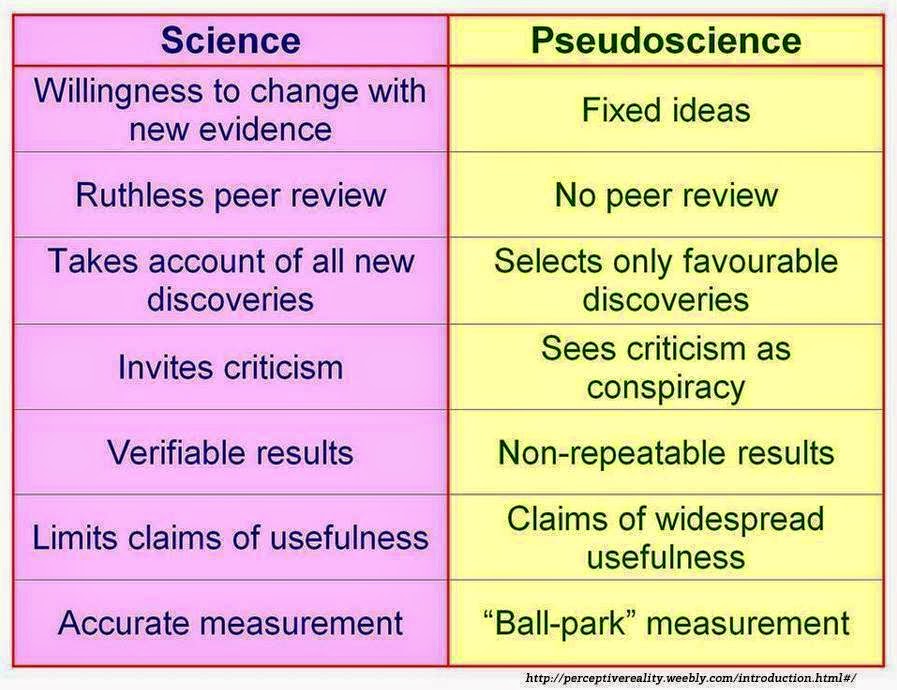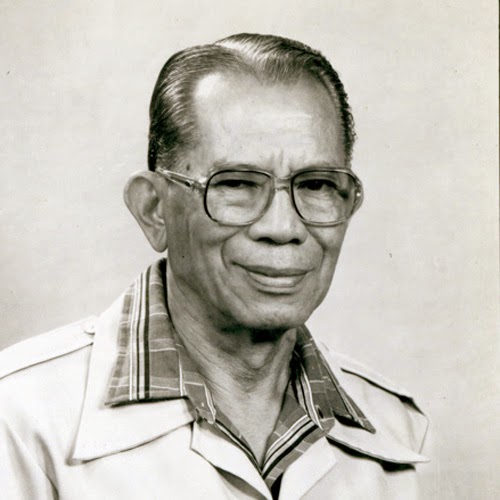Google the Hourglass Nebula pictures and "here's looking at you kid" and "if your eye be single, your whole body shall be filled with light." and the floating pyramid capstone eye, and the eye of Osiris,.............
All Posts (6509)
 |
| Source: Antonio Toriz's blog |
Guillermo González Camarena invented an early color television system. He received US patent 2296019 on September 15, 1942 for his "chromscopic adapter for television equipment". [1]
He was born on February 17, 1917 in Guadalajara, Jalisco. At two years of age, his family moved to Mexico City. Ever since he was young, he liked building electric toys, for which he established a laboratory in the basement of his house.
In 1930 he enrolled in the School of Mechanical and Electric Engineers and two years later was given license as radio operator. While he experimented in his laboratory, he worked at the radio station of the Ministry of Education. In 1934 he built his own television camera, he was 17 years old.
With the goal of giving color to television, he developed and patented a Trichromatic Sequential Fields System from primary colors, which could be adapted to the black and white system. This last patent was granted to him when he was 23 years of age. [2]
1. Inventors.com: Top List of Mexican Inventors, Mary Bellis
2. Explore and do Mexico: Guillermo González Camarena...
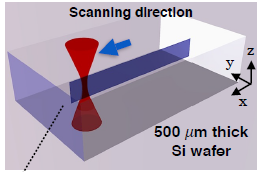 |
| Source: Link for Technology Review follows |
TECHNOLOGY REVIEW: A new technique for creating pipes and tunnels deep inside silicon chips could change the way engineers make microfluidic machines and optoelectronic devices.
One of the enabling technologies of the modern world is the ability to construct ever smaller devices out of silicon. At first, these devices were purely electronic—diodes, transistors, capacitors and the like. But more recently, engineers have carved light pipes, fluid-pumping networks, and entire chemistry laboratories out of silicon.
The technique that makes all this possible is photolithography, which allows engineers to build on or etch the surface of silicon in very precise patterns. The devices—whether electronic, fluidic, or optical—are built up layer by layer. Everything is done in two dimensions on the surface of silicon and then added together to create 3-D shapes.
But what if it were possible to carve out structures beneath the surface of silicon, to create 3-D caves of almost any shape? Today, Onur Tokel at Bilkent University in Turkey and a few pals say they have developed just such a technique that can create networks of pipes and tunnels beneath the surface without any discernable change to the silicon surface.
The new technique relies on the fact that silicon is transparent to infrared light, which passes through silicon like sunlight through glass, at least at low intensities. When the light gets stronger, it can interact with electrons inside the material, generating currents and shaking the very crystal structure of the material. These effects are hard to predict and control but Tokel and co have found a way to use them to their advantage.
Abstract
Micromachining of silicon with lasers is being investigated since the 1970s. So far generating subsurface modifications buried inside the bulk of the silicon without damaging the surface has not resulted in success. Here, we report a method for photo-inducing buried structures in doped silicon wafers with pulsed infrared lasers without modifying the wafer surface. We demonstrate large aspect-ratio, continuous multilevel subsurface structures, with lengths on the millimetre scale, while having sub-micron widths. We further demonstrate spatial information encoding capabilities embedded in subsurface silicon barcodes based on an optical coherence tomography (OCT) readout. The demonstrated silicon processing technology can be used for the realization of multilayered silicon chips, optofluidics and on-chip quantum optics experiments.
Physics arXiv: Laser-Writing in Silicon for 3D Information Processing
O. Tokel, A. Turnali, I. Pavlov, S. Tozburun, I. Akca, F. O. Ilday
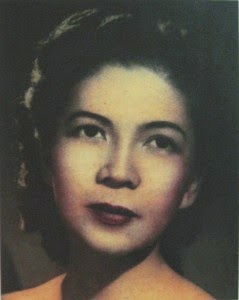 |
| Source: Amazing Women of History link below |
Fe del Mundo (1911–2011) was a Filipino pediatrician who was the first woman to be admitted to Harvard Medical School in 1936 — over ten years before the school officially began admitting women. She was also the first woman to be named National Scientist of the Philippines in 1980, and founded the first pediatric hospital in the Philippines.
Born in Manila in the Philippines in 1911, Fe decided to become a doctor when her older sister died from appendicitis at the age of 11. She enrolled in the University of the Philippines in 1926. While earning her medical degree, she decided to pursue pediatrics. *
Fe del Mundo, OLD ONS OGH, (November 27, 1911 – August 6, 2011) was a Filipino pediatrician. The first woman admitted as a student of the Harvard Medical School,[1][2] she founded the first pediatric hospital in the Philippines.[3] Her pioneering work in pediatrics in the Philippines in an active medical practice that spanned 8 decades[2][4] won her international recognition, including the Ramon Magsaysay Award for Public Service in 1977. In 1980, she was conferred the rank and title of National Scientist of the Philippines while in 2010, she was conferred the Order of Lakandula.
Del Mundo was noted for her pioneering work on infectious diseases in Philippine communities. Undeterred by the lack of well-equipped laboratories in post-war Philippines, she would not hesitate to send specimens or blood samples for analysis abroad.[12] In the 1950s, she pursued studies on dengue fever, a common malady in the Philippines of which little was then yet known.[12] Her clinical observations on dengue, and the findings of research she later undertook on the disease are said to "have led to a fuller understanding of dengue fever as it afflicts the young".[5] She authored over a hundred articles, reviews and reports in medical journals[5] on such diseases as dengue, polio and measles.[16] She also authored "Textbook of Pediatrics", a fundamental medical text used in Philippine medical schools.[17]
Del Mundo was active in the field of public health, with special concerns towards rural communities. She organized rural extension teams to advise mothers on breastfeeding and child care.[11] and promoted the idea of linking hospitals to the community through the public immersion of physicians and other medical personnel to allow for greater coordination among health workers and the public for common health programs such as immunization and nutrition.[17] She called for the greater integration of midwives into the medical community, considering their more visible presence within rural communities. Notwithstanding her own devout Catholicism,[2][5][11] she is an advocate of family planning and population control.[11]
Del Mundo was also known for having devised an incubator made out of bamboo,[17] designed for use in rural communities without electrical power.[11] Wikipedia
* Amazing Women in History: Dr. Fe del Mundo
 |
| Artistic impression of quantum information. (Courtesy: iStockphoto/tusumaru) |
A quantum analogue of data compression has been demonstrated for the first time in the lab. Physicists working in Canada and Japan have squeezed quantum information contained in three quantum bits (qubits) into two qubits. The technique could pave the way for a more effective use of quantum memories and offers a new method of testing quantum logic devices.
Compression of classical data is a simple procedure that allows a string of information to take up less space in a computer's memory. Given an unadulterated string of, for example, 1000 binary values, a computer could simply record the frequency of the 1s and 0s, which might require just a dozen or so binary values. Recording the information about the order of those 1s and 0s would require a slightly longer string, but it would probably still be shorter than the original sequence.
Quantum data are rather different, and it is not possible to simply determine the frequencies of 1s and 0s in a string of quantum information. The problem comes down to the peculiar nature of qubits, which, unlike classical bits, can be a 1, a 0 or some "superposition" of both values. A user can indeed perform a measurement to record the "one-ness" of a qubit, but such a measurement would destroy any information about that qubit's "zero-ness". What is more, if a user then measures a second qubit prepared in an identical way, he or she might find a different value for its "one-ness" – because qubits do not specify unique values but only the probability of measurement outcomes. This latter trait would seem to preclude the possibility of compressing even identical qubits, because there is no way of predicting what classical values they will ultimately manifest as.
Note: I know that was difficult to follow, but don't go all "new age" here. Although I've noticed the popularity of relating quantum physics to metaphysics, the two are mutually exclusive - quantum only applies to phenomena going at or approaching the speed of light. Ahem: we humans are rather slow in comparison.
Physics World: Quantum data are compressed for the first time
Jon Cartwright, Bristol, UK
K. Ceres Wright's Tech Noir tale takes us to the streets of futuristic Shanghai where the dangerous nightlife is ruled by ruthless Chinese Triads!
Freelance undercover operative Thia Wayan is transformed into the guise of a Chinese National in order to infiltrate the Drug Trade. As she makes her way through the ranks, her already dangerous assignment runs into an unintended snag when a powerful Gang Boss acquires an intriguing jeweled artifact.
Despite the situation beginning to unravel around her, Agent Wayan must maintain her cool and not succumb to the growing madness surrounding her!
The intrigue and danger begins in 'Dark God's Gift: A Tangled Web' part I!
Just in time before the release of Aura - The art of Winston Blakely
comes what I consider a very introspective , positive and personal
interview on myself.
Please take a moment and read this... I am sure you will enjoy it.
Thanks
http://cedpharaoh.com/360BEYOND/creator-spotlight-winston-blakely-conceptual-and-comic-book-artist/
Today the 'Dark God's Gift' arrives with an introduction - 'Existence' by H. Wolfgang Porter. On Tuesday, K. Ceres Wright's 'Dark God's Gift: A Tangled Web begins and will be featured in 4 parts posted daily this week. Be prepared for a dangerous Tech Noir romp in the mean streets of futuristic Shanghai!
 |
| Baltimore Sun - Christopher J. "Gus" Loria |
CHRISTOPHER J. GUS LORIA (COLONEL, USMC, RET.)
NASA ASTRONAUT (FORMER)
PERSONAL DATA: Born July 9, 1960 in Belmont, Massachusetts, he considers League City, Texas, his hometown. He is married to the former Jamie Ann Fraser, and he has three children. His mother, Joan Loria, resides in Belmont, Massachusetts. His father, Robert L. Loria, is deceased.
EDUCATION: Graduate of Belmont High School (1978), and the US Naval Academy Preparatory School (1979). Bachelor of Science degree in General Engineering from the U.S. Naval Academy (1983). Master in Public Administration from John F. Kennedy School of Government, Harvard University (2004).
ORGANIZATIONS: Harvard Alumni Association, Society of Experimental Test Pilots, U.S. Naval Academy Alumni Association, Marine Corps Aviation Association, National Rifle Association.
SPECIAL HONORS: NASA Fellow, NASA Acquisition Improvement Award, NASA Group Achievement Award, Naval Test Wing Atlantic Test Pilot of the Year 1995-1996. Personal awards include the Defense Superior Service Medal, 3 Meritorious Service Medals, 2 Navy Commendation Medals (1 with V), 2 Air Medals (both with V), 4 Strike Flight Air Medals, Navy Achievement Medal.
EXPERIENCE: Loria received his commission from the Naval Academy in 1983, and was designated a Naval Aviator in July 1988. He transitioned to the F/A-18 Hornet with Strike Fighter Squadron 125 (VFA-125) at Naval Air Station Lemoore, California, during August 1988 through August 1989. His next assignments were with Marine Fighter Attack Squadrons 314 and 101 (VMFA-314 the Black Knights and VMFAT-101 the Sharpshooters) at Marine Corps Air Station El Toro, California. While assigned to the Black Knights he deployed to Bahrain for Operations Desert Shield and Desert Storm where he flew 42 combat missions in support of allied operations. He graduated with Class 93A from the United States Air Force Test Pilot School at Edwards Air Force Base, California in December of 1993. January 1994 to July 1996, he was assigned to VX-23, the Strike Aircraft Test Squadron, Naval Air Station Patuxent River, Maryland, as an experimental test pilot. Loria distinguished himself in the areas of high angle of attack flight test, ordnance, flight controls and aircraft flying qualities testing for the F/A-18 Hornet, and aircraft departure and spin testing for the F/A-18A-D models and the NASA Dryden F/A-18 HARV thrust vectoring aircraft.
He has 3,079 hours of flight time and has flown 32 different aircraft.
NASA: Christopher J. "Gus" Loria, Colonel, USMC, Astronaut - retired
 |
| Controlling magnetic clouds in graphene. Condensed Matter Physics Group, University of Manchester, UK |
A new way to grow high-quality, wafer-scale graphene measuring between 100 and 300 mm across has been developed by researchers in the US and UK. The feat is a major advance since a size of 300 mm represents the silicon wafer-scale standard and means that the carbon material might now be easily integrated with silicon – a major goal for graphene research.
Graphene, a sheet of carbon just one atom thick, is a promising material for making molecular electronic devices of the future thanks to its unique electronic and mechanical properties, which include extremely high electrical conductivity and exceptional strength. The first real-world applications of graphene devices will most likely involve combining the carbon material with silicon complementary metal-oxide-semiconductor (CMOS) technology. However, integrating graphene with Si CMOS has proved to be more difficult than first imagined since there is no reliable process capable of producing large-area graphene films that have the same high performance as chip-scale ones.
Researchers have already tried out several methods for growing wafer-scale graphene, including epitaxially growing the material on SiC wafers, reducing graphene oxide, chemical vapour deposition (CVD) on metal thin films (such as copper) and recently CVD on hydrogen-terminated single-crystalline germanium surfaces. Among these techniques, CVD is probably the best in terms of compatibility with Si very large-scale integrated (VLSI) technology. However, there is a problem in that the graphene produced can be quite defective and so suffers from lower charge carrier mobilities.
Now, a team of researchers led by Deji Akinwande of the University of Texas at Austin and Ken Teo of Aixtron Ltd in Cambridge, have grown CVD graphene films that measure between 100 and 300 mm across on polycrystalline copper films. The as-made polycrystalline graphene appears to have better charge carrier transport characteristics compared to previously synthesized poly- or single-crystalline wafers. What is more, the graphene covers over 96% of the substrates and has few defects – something that the researchers confirmed using a technique called Raman mapping.
Nano Tech Web: Graphene almost there for silicon wafer-scale standard
Belle Dumé, contributing editor at nanotechweb.org
I know that despite the fact that baseball isn't as popular as it used to be, it's still a robust sport and an American tradition. And every so often you see something special in sports that you don't see every day. As a Yankees fan and a fan of baseball, I'm going to really miss Captain Derek Jeter. He was that special something in baseball.
I'm still wrapping my mind around the fact that he's not going to be at Yankee Stadium at the position of shortstop opening day 2015. Today, I actually witnessed his last at bat on TV against the Red Sox. But he's earned his retirement. I can relate to him. Nope, I'm not a millionare. Nope, I still haven't been drafted by any sports team (but you never know what the future holds. Nope, I never won any World Series rings. However I can appreciate Jeter's path to being the best.
Jeter wasn't the strongest guy or the fastest runner in baseball. Jeter wasn't the flashiest player for the most part (except when he just happened to make these awesome plays that seemed to come out of thin air). Jeter didn't thump his chest and boast of his greatness. Jeter didn't bash baseball rivals, and he did his best to not speak ill of his teammates either. Jeter didn't embarrass himself and the Yankees by acting stupid in public.
Let's be honest about Jeter. He got overlooked by a lot of the baseball experts when he was first drafted. He didn't always have the highest baseball stats from season to season. There were guys around him who hit way more home runs than he did.
However Jeter worked hard to improve himself as a student of the game. He sought to make his teammates feel comfortable in the clubhouse and confident enough in their own abilities to play at their best. It didn't matter if you were a nervous and eager rookie who just got called up from the minors or a high paid veteran free agent. Jeter didn't care. He'd strive to make sure you were comfortable and ready to play.
Jeter's leadership style was that of leading by example. He tried to do whatever he could to help the Yankees win that was within the rules. If he was asked to make a humble sacrifice bunt so somebody else could get on base, he would do it without complaining. This leadership helped to subconsciously elevate the play of the entire team. I respect that a lot and try to do the same at my job, in my community and in my church. I try to do that in my writing and other projects. Thanks for the memories and wisdom shared, Captain Jeter.
The Dark God's Gift starts Tomorrow with an introduction by H. Wolfgang Porter. Then on Tuesday, September 30th K. Ceres Wright's 'A Tangled Web' starts and will be featured in four parts concluding on Friday October 3rd! Get ready for Dark Tales of Action, Lust and Horror to be told in the Dark God's Gift season 2!
 |
| Manuel Corominas - see link below |
El ingeniero Manuel Jalón Corominas, inventor de la fregona, ha fallecido esta madrugada en Zaragoza, a los 86 años, tras sufrir una parada cardiorrespiratoria.
Así lo ha confirmado uno de sus nietos, Alejandro, quien ha informado de que falleció en el hospital Miguel Servet de la capital aragonesa, de forma rápida y sin sufrir.
Manuel Jalón es el inventor de la fregona, pero en su currículum tiene además otras patentes muy importantes, como innovaciones en la jeringuilla desechable y otras de uso industrial.
Natural de Logroño (La Rioja), pasó la mayor parte de su vida en Zaragoza, ciudad de la que fue nombrado hijo adoptivo en 1992, aunque previamente vivió en Estados Unidos o en Finlandia, donde trabajó después de obtener el título de Ingeniería Aeronáutica -en Madrid- y de escribir su tesis doctoral sobre accidentes aeronáuticos.
*****
Manuel Jalon Corominas engineer, inventor of the mop, died this morning in Zaragoza, to 86 years , after suffering a cardiac arrest.
Manuel Jalon is the inventor of the mop on your resume but also has other important patents, such innovations in the disposable syringe and other industrial use.
Born in Logroño (La Rioja), spent most of his life in Zaragoza city that was named adoptive son in 1992, but previously lived in the United States or Finland, where he worked after earning the title of Aeronautical Engineering - in Madrid and writing his doctoral thesis on aviation accidents.
Spanish Inventor: Manuel Corominas
 |
| Source: The Economist |
I have four previous posts about BICEP2 and how the initial roll out (i.e. announcement) was heady for some; aggrandizement for others.
This next to the last paragraph at the bottom of The Economist sums it succinctly:
Rowing back on a triumphant announcement about the first instants of creation may be a little embarrassing, but the saga is a useful reminder of how science works. There is no suggestion that anyone has behaved dishonourably. Admittedly, the BICEP team’s original press conference looks, with hindsight, seriously overconfident. More information-sharing between the various gravitational wave-hunters, all of whom guard their data jealously, might have helped tone down the triumphalism. But science, ideally, proceeds by exactly this sort of good-faith argument and honourable squabbling—until the weight of evidence forces one side to admit defeat.
Now, the last paragraph points to a joint paper that's coming from the European Planck Telescope & BICEP2, (open adversaries to) the BICEP2 team. This seems confusing to those that would use this to point to scientific findings as "just theory," and if the scientists were so sure, they wouldn't change their minds on it. It atomizes the academy and politicizes reported results.
This however, is the nature of science and how it works.
There has to be an understood release to public scrutiny - not at all like (emphasis: unequal to) opinions trolled on Social Media - but peer review, which can be brutal for the uninitiated.
Whatever your findings are, become vetted by like-trained professionals who will first attempt to: 1. Read and understand your report and its results; 2. Using the conditions you've described in your paper, attempt to simulate and/or duplicate or get statistically close to your reported results within an acceptable percent error range.
The pseudosciences are not apt to subject themselves to this kind of scrutiny, often becoming openly hostile to any challenge to their veracity. The projected accusation is usually the scientific community is close-minded, reactionary and projecting a "religion of secular humanism."
All scientists are not humanists, that is a generalization. However, for a field to call itself a "science," it must be willing to allow this kind of public scrutiny, and if proven wrong: acquiescence to the prevailing evidence. Otherwise, it is mere notion and political canard for manipulation of a public that wishes to hear it for their own comfort at the sacrifice of their advancement and empowerment.
How Stuff Works:
How The Scientific Method Works
Scientific Method Steps
Scientific Method Videos
History of the Scientific Method
#P4TC: Ibn al-Haytham
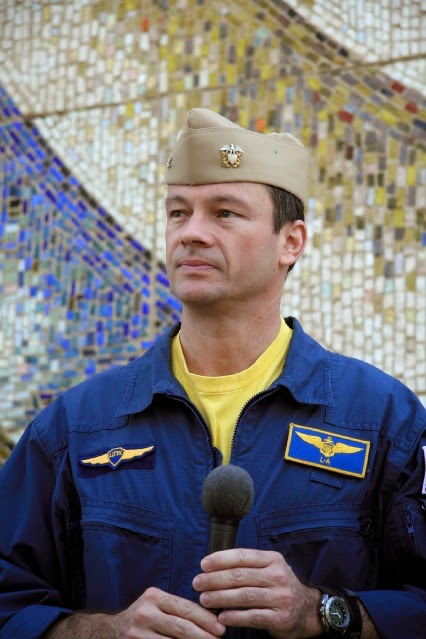 |
| International Space Station Imagery |
MICHAEL E. LOPEZ-ALEGRIA (CAPTAIN, USN, RET.)
NASA ASTRONAUT (FORMER)
PERSONAL DATA: Born May 30, 1958, in Madrid, Spain, and grew up in Mission Viejo, California. Lopez-Alegria enjoys sports, traveling and cooking and is interested in national and international political, economic and security affairs.
EDUCATION: Graduated from Mission Viejo High School, Mission Viejo, California, in 1976; received a bachelor of science degree in systems engineering from the U.S. Naval Academy in 1980 and a master of science degree in aeronautical engineering from the U.S. Naval Postgraduate School in 1988. Graduate of Harvard University’s Kennedy School of Government Program for Senior Executives in National and International Security. Speaks Spanish, French and Russian.
EXPERIENCE: Following flight training and designation as a Naval Aviator in 1981, Lopez-Alegria served as a flight instructor and then as a pilot and mission commander of EP-3E aircraft. In 1986, he was assigned to a 2-year cooperative program between the Naval Postgraduate School in Monterey, California, and the U.S. Naval Test Pilot School in Patuxent River, Maryland. His final tour before being assigned to NASA was at the Naval Air Test Center as an engineering test pilot and program manager. He has accumulated more than 5,700 pilot hours in over 30 different aircraft types.
NASA EXPERIENCE: Lopez-Alegria reported for training to the Johnson Space Center (JSC) in August 1992. Following a year of training and designation as an astronaut, he was first assigned to be the Astronaut Office technical point of contact to various space shuttle project elements. Lopez-Alegria was then assigned to Kennedy Space Center (KSC), where he provided crew representation on orbiter processing issues and support during launches and landings. Following his first spaceflight, he served as NASA Director of Operations at the Yuri Gagarin Cosmonaut Training Center in Star City, Russia. After his second mission, he led the International Space Station (ISS) Operations branch of the Astronaut Office. Following his third spaceflight, he was assigned as the technical liaison to JSC’s Extravehicular Activity (EVA) Office. A veteran of four space flights, Lopez-Alegria has logged more than 257 days in space and performed 10 spacewalks totaling 67 hours and 40 minutes of EVA. He retired from the Navy in June 2008 and left NASA in March 2012. Lopez-Alegria currently serves as President of the Commercial Spaceflight Federation in Washington, D.C.
NASA: Michael E. Lopez-Alegria, Captain, US Navy (retired, former astronaut)
 |
| Technology Review |
TECHNOLOGY REVIEW: The first teleportation of a photon inside a photonic chip illustrates both the potential for quantum computation and the significant challenges that lay ahead.
Back in 2001, an obscure group of theoretical physicists proved a remarkable result. They showed that it was possible to build a quantum computer out of ordinary optical components, such as mirrors, lenses, lasers and so on.
That was something of a surprise. Until then, physicists had thought that quantum computing would only be possible using non-linear crystals and other exotic components that are hard to control.
The prospect of using ordinary bits and pieces has an important consequence. It immediately suggests that more powerful devices can be built simply by adding extra components. This problem of scalability has always plagued other attempts to build quantum computers.
The reaction from the theoretical physics community was barely controlled excitement. But in practice, this approach has never lived up to its early promise. That’s because it is hard to build even ordinary optical components into chip-like devices that can be scaled like conventional silicon chips. It is just not possible to manufacture them with the required performance and tolerances.
Today, Benjamin Metcalf at the University of Oxford and a few pals show how they are tackling these problems while aiming for the ultimate goal of scalable quantum computation. These guys have built the first self-contained photonic chip capable of teleportation, one of the fundamental logic operations necessary for quantum computation. The device is a proof-of-principle demonstration that scalable quantum computers of this type are firmly in the crosshairs of experimental physicists. But it also reveals that significant challenges lay ahead.
Physics arXiv: Quantum teleportation on a photonic chip
Benjamin J. Metcalf, Justin B. Spring, Peter C. Humphreys, Nicholas Thomas-peter, Marco Barbieri, W. Steven Kolthammer, Xian-min Jin, Nathan K. Langford, Dmytro Kundys, James C. Gates, Brian J. Smith, Peter G. R. Smith, Ian A. Walmsley
Geothermal power is the largest source of economically and technically feasible energy now available in our planet. It derives from the molten mass filling the inner core of the earth, over which the surface on which we live forms a relatively thin crust. Problems with geothermal energy are that technology for its use is new and little known, and it is accessible only in the earth's "hot spots." With these the Philippine archipelago is well endowed, located as it is on the "Pacific Ring of Fire." When accurately understood and wisely used this immense arc of tectonic and volcanic activity that girdles the Pacific Ocean, previously only feared for its earthquakes and eruptions, can become a major benefactor.
The use of geothermal heat is not new. Both Norse Vikings who settled Iceland more than 1,000 years ago and American Indians used geothermal geysers for cooking and baking. Maoris, who settled New Zealand some 600 years ago, grew their sweet potatoes in geothermally heated gardens.
The first industrial harnessing of steam from the earth began in northern Italy more than half a century ago, but the largest geothermal installation today is at The Geysers in California where dry steam readily lends itself to conventional generating, providing more than enough electric power for the city of San Francisco. However most of the geothermal energy available in the Philippines and elsewhere is wet steam—70 percent of production from a well may be hot water—and this demands a different and more difficult technology.
ARTURO PINEDA ALCARAZ was born in Manila in 1916 and grew up in Baguio where his father was city auditor during the gold mining boom. After studying a year at the University of the Philippines, ALCARAZ transferred to Mapua Institute of Technology when it offered the first degree in mining engineering. He earned a masters degree in geology at the University of Wisconsin and returned home in 1941 to be assigned by the Bureau of Mines to the island of Busuanga. Next posted to the Weather Bureau, its director, Maximo Lachica, introduced him to the science of seismology.
In 1952 the Philippine Congress responded to the destructive eruptions of Mount Hibok-Hibok on Camiguin Island by creating the Commission on Volcanology. Assigned as Chief Volcanologist, ALCARAZ began to pursue more fully the study of volcanos in order to improve eruption warning and assess possibilities for use of stored heat beneath them.
The first electric bulb in the Philippines lit by earth-heat energy was in Tiwi, Albay, on April 12, 1967. Three years later President Ferdinand Marcos set apart two geothermal reservations to be administered by the National Power Corporation (NPC), to which ALCARAZ transferred in 1974 as Chief of the Geothermal Division. The NPC, in cooperation with Philippine Geothermal, Inc., a subsidiary of Union Oil Company of California, has since brought on stream 550 megawatts of power at Tiwi and at Mac-Ban near Los Banos, making the Philippines the largest producer of geothermal electric energy from wet steam in the world. Meanwhile major geothermal energy fields in Leyte and Negros are under development by the Philippine National Oil Company Energy Development Corporation, with the cooperation of New Zealand and specialists from elsewhere. Present production is scheduled to be multiplied six times in the next seven years, thus further cutting down on oil imports.
Ramon Magsaysay Award Foundation: Alcaraz, Arturo Pineda
 |
| Technology Review |
TECHNOLOGY REVIEW: When it comes to building microscopic devices, one of the most promising ideas is to exploit the process of self-assembly. In this way, complex structures can be created by combining building blocks under natural circumstances.
This kind of self-assembly mechanism dominates at the molecular scale, where it is responsible for the construction of most biomolecules. At the heart of this mechanism is Brownian motion which effectively mixes and jiggles molecules so that they rapidly find their place in incipient structures. This is a powerful process that can form hugely complex machines such as the ribosome, a molecular device for synthesizing proteins.
One recent idea is to use colloids rather than molecules as the building blocks for even more advanced structures. Colloids are insoluble, nanometre-scale particles mixed in water. These particles can be chemically engineered to bind together to form specific structures.
But as the building blocks become bigger, it takes longer for Brownian motion to jiggle the blocks into the appropriate locations. So self-assembly take significantly longer. In fact, it can take thousands of seconds to synthesise a single colloidal molecule. At that rate, a millimetre cube containing 1 billion colloidal molecules would take 30 years to form.
Clearly, that is far too slow for any kind of industrial process, so chemists have been looking for ways to speed up colloidal self-assembly. Today, Bingqing Shen at ESPCI (the Paris Institute of Technology) in France and a few buddies say they’ve found an entirely new way to assemble structures on this scale that should reduce manufacturing time by orders of magnitude.
Physics arXiv:
Self-Assembly Driven By Hydrodynamic Interactions In Microfluidic Devices
Bingqing Shen, Joshua Ricouvier, Mathilde Reyssat, Florent Malloggi, Patrick Tabeling
 |
| “The first time I saw a laser printer, I thought about making books with it.” |
Born July 27, 1957 in Mexico City. Victor is an inventor who obtained patents for the technology popularly known as InstaBook or Book On Demand, as well as that of Distributed Printing technology in which an e-book is distributed among as many printing centers as required for immediate production and delivery, thereby creating a vast network of digital bookstores and libraries.
At a young age Celorio had a huge appreciation for the written word. Celorio loved to read and wanted to become a writer. Unfortunately there were not many bookstores in the area he lived in and always had a hunger for more books. This is where his idea to make books more accessible started, from his own battle in obtaining them. Celorio knew that books not only needed to be more accessible but affordable. The problem with publishing as Celorio saw it was actually found in the distribution system. Typically, a book retailer orders the number of books it thinks it can sell. But should the title prove to be popular, the store may not be able to order more if the publisher’s inventory is depleted. Alternately, small stores can’t afford to keep slow moving titles in stock. With these thoughts in mind, the idea for Print on Demand technology was born.
Amazing Mexicans: Victor Celorio, Inventor

